The geological phenomenon of stones moving on the dry lake of Racetrack Playa
The Racetrack Playa is an exceptionally flat and dry lake located above the northwest side of the Death Valley, in the National Park of the Death Valley, California. This lake is especially known to be one of the strangest mysteries of the planet, namely the slippery rocks (or moving). You can find these rocks on the dry ground of Racetrack Playa with long trails behind them. Although no one has actually seen the rocks move, the long straight or winding tracks left on the surface of the lake mud attest to their “activity”. Some of these rocks weigh tens of kilos and have travelled more than 400 metres, leaving us a single question in mind:
How are they moving?
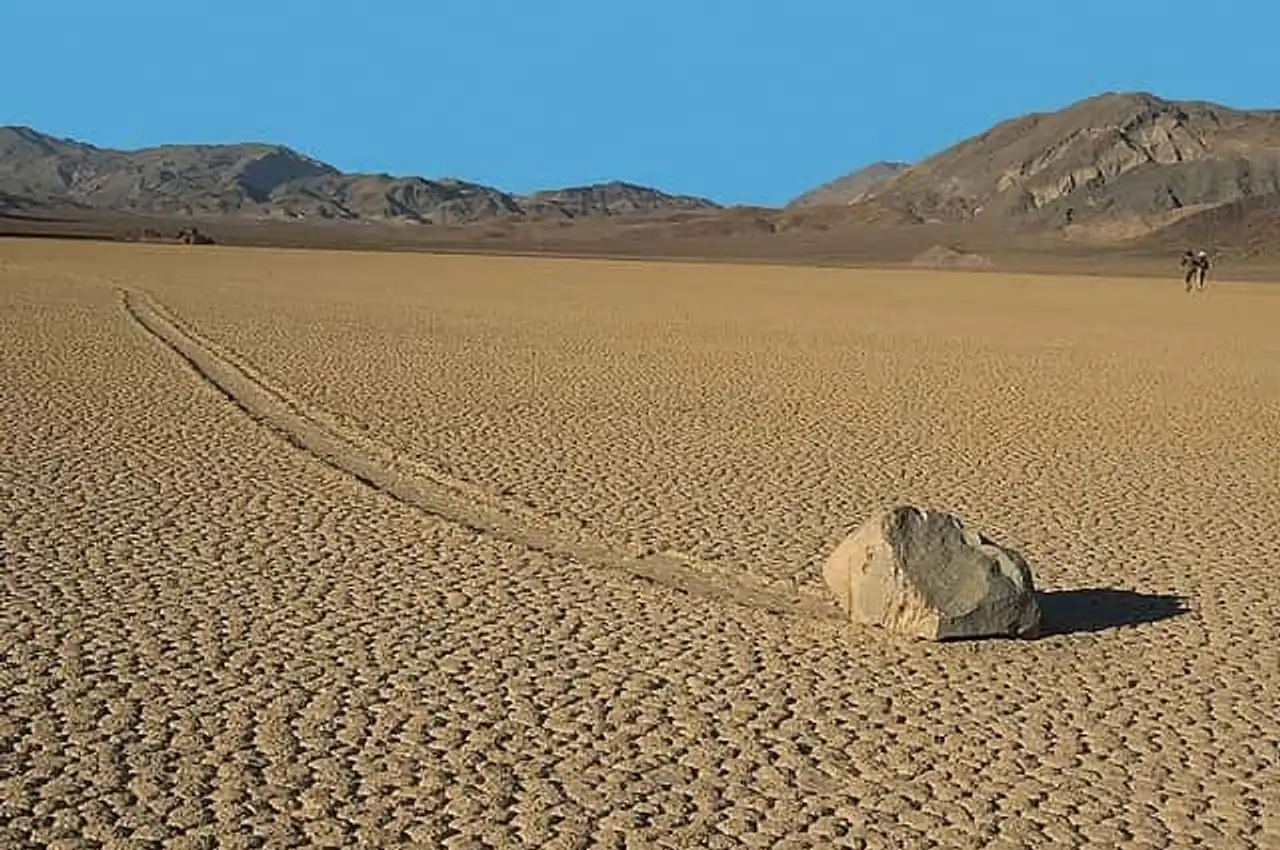
Flickr – Phil Carter
The stones move only every two or three years and most traces develop over three or four years. The stones with uneven undersides leave striated and straight tracks while the smooth ones snake. Sometimes the stones turn around, exhibiting another ridge on the ground and leaving a different trace in their wake.
The traces are all different, both in length and in orientation. Two rocks leaving one next to the other will move parallel for a certain time, before one suddenly changes direction to the left, to the right, or even return to its original direction. The length of the tracks also varies, two rocks of the same size and shape can move uniformly, then stop or continue...
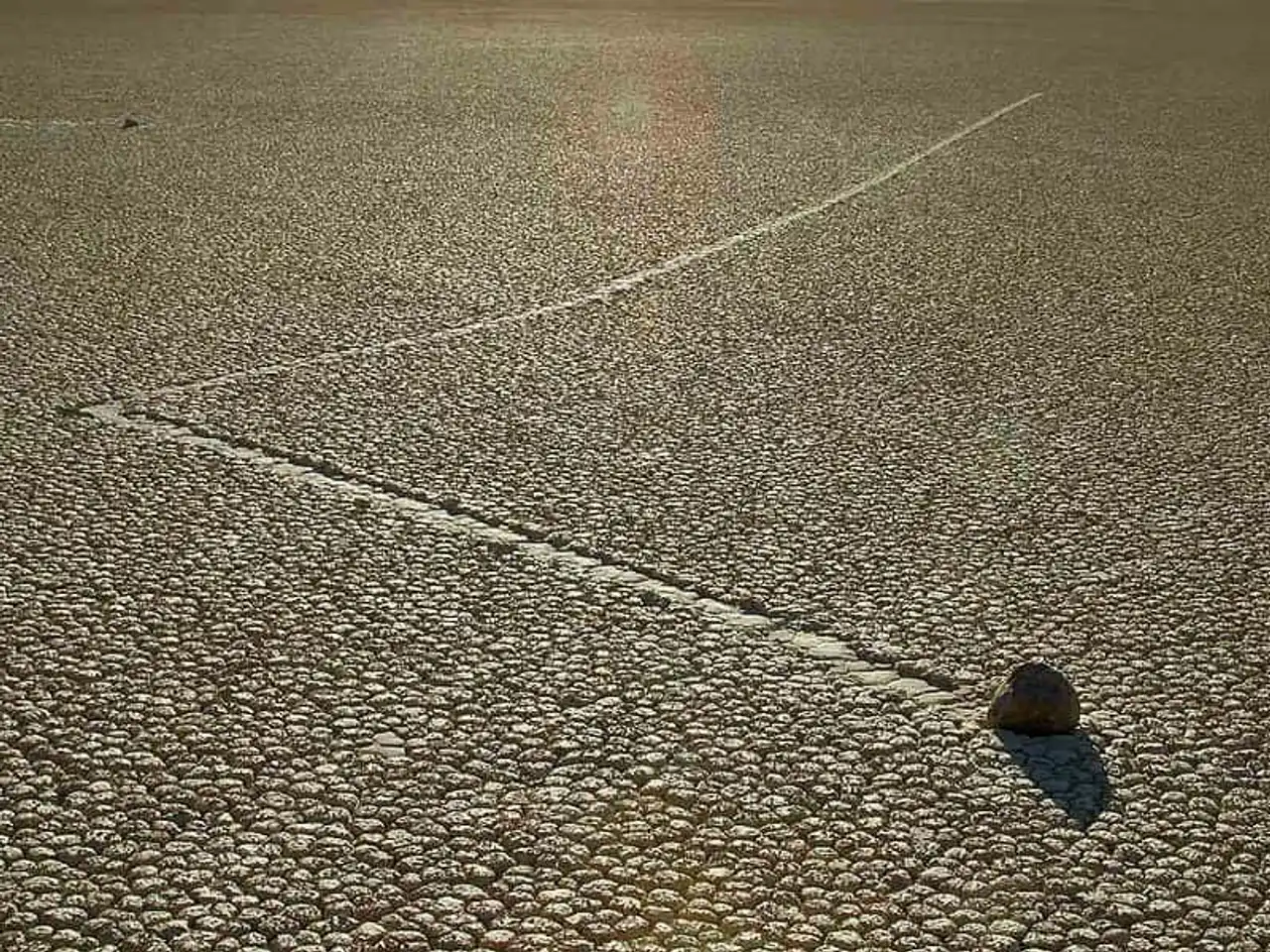
Wikimedia – Jon Sullivan
Despite a century of scientific research, this curious phenomenon has confused geologists and visitors from this place. To date, no one has ever seen the rocks move. However, without eyewitnesses, innumerable theories have been advanced over the years in order to explain the reasons for these “walking stones”.
A first idea suggested that the rocks were driven by gravity, gradually slipping on the slope over a long period of time. But this theory was ruled out when it was revealed that the north end of the lake is in fact several centimetres higher than the southern end and that most of the rocks were going in that direction.
A very plausible theory: a combination of strong winds and a very wet and slippery soil
Although no one has yet been able to conclusively identify the reason for the movement of these rocks, a woman may have pierced the mystery . For ten years from 1994, Dr. Paula Messina, a professor of geology at the State University of San Jose, California, followed the movement of each of the 162 scattered rocks on the playa. His research suggests that rare combination of rain and wind allow rocks to move . A rain of about 1.2 cm can wet the surface of the lake, offering a firm surface, but extremely slippery. Strong, sustained winds of 80 km/h or more with strong gusts can keep the rocks moving. At an altitude of 1130 m, winds can reach regularly 150 km/h.
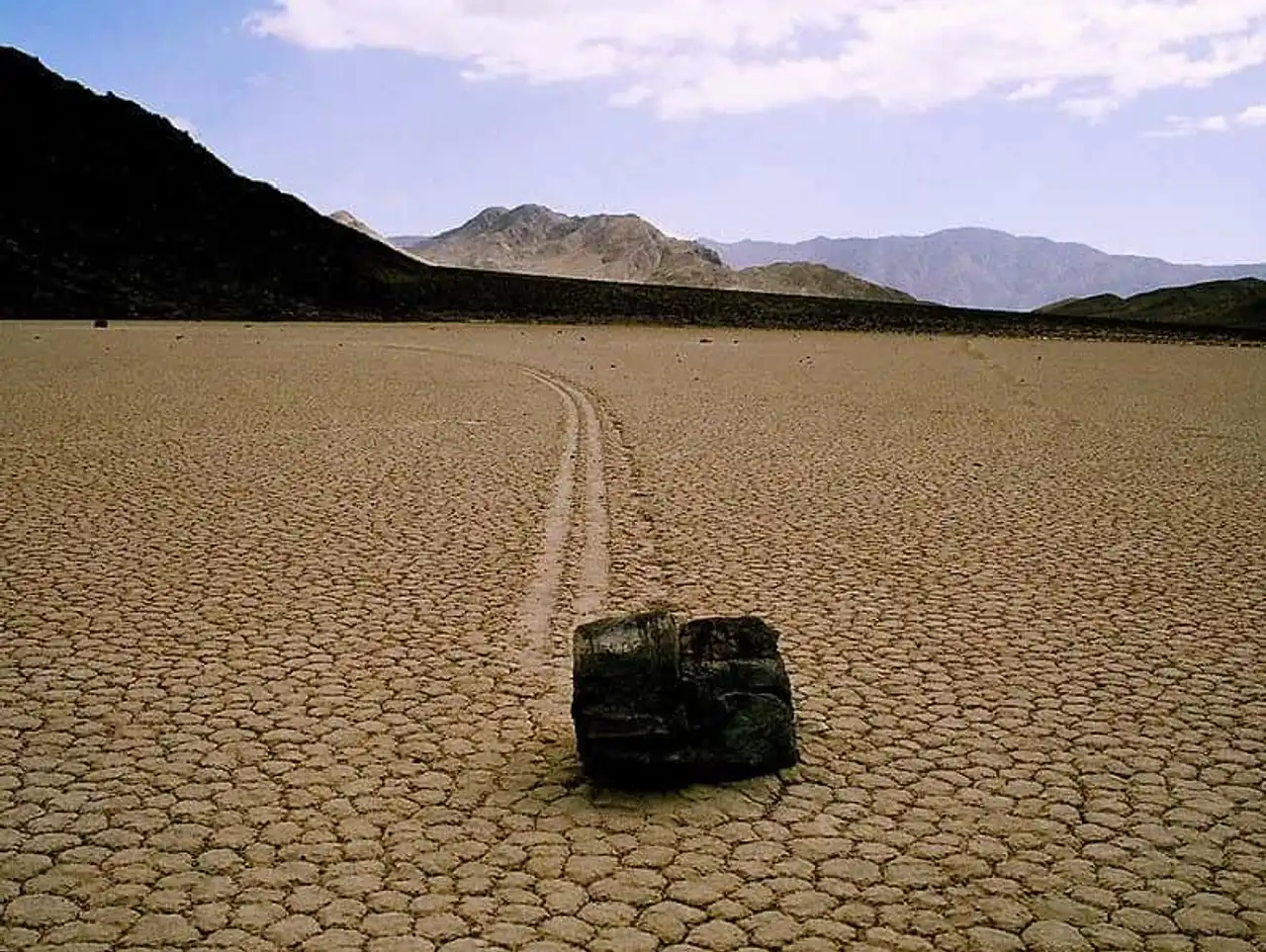
Wikimedia - Tahoenathan
Some people suggested setting a radio transmitter on the rocks or erecting cameras to film them “in the act” in order to put an end to speculation. But as the National Park of the Death Valley is considered to be 95% wild desert, all research in the park must be "non-invasive". It is forbidden to build permanent structures. Moreover, no one is allowed to walk on the Racetrack Playa when it is soaked because each print would leave an indelible scar, as these mysterious moving stones do.
Following these photos, it is indicated how to go to see this place.
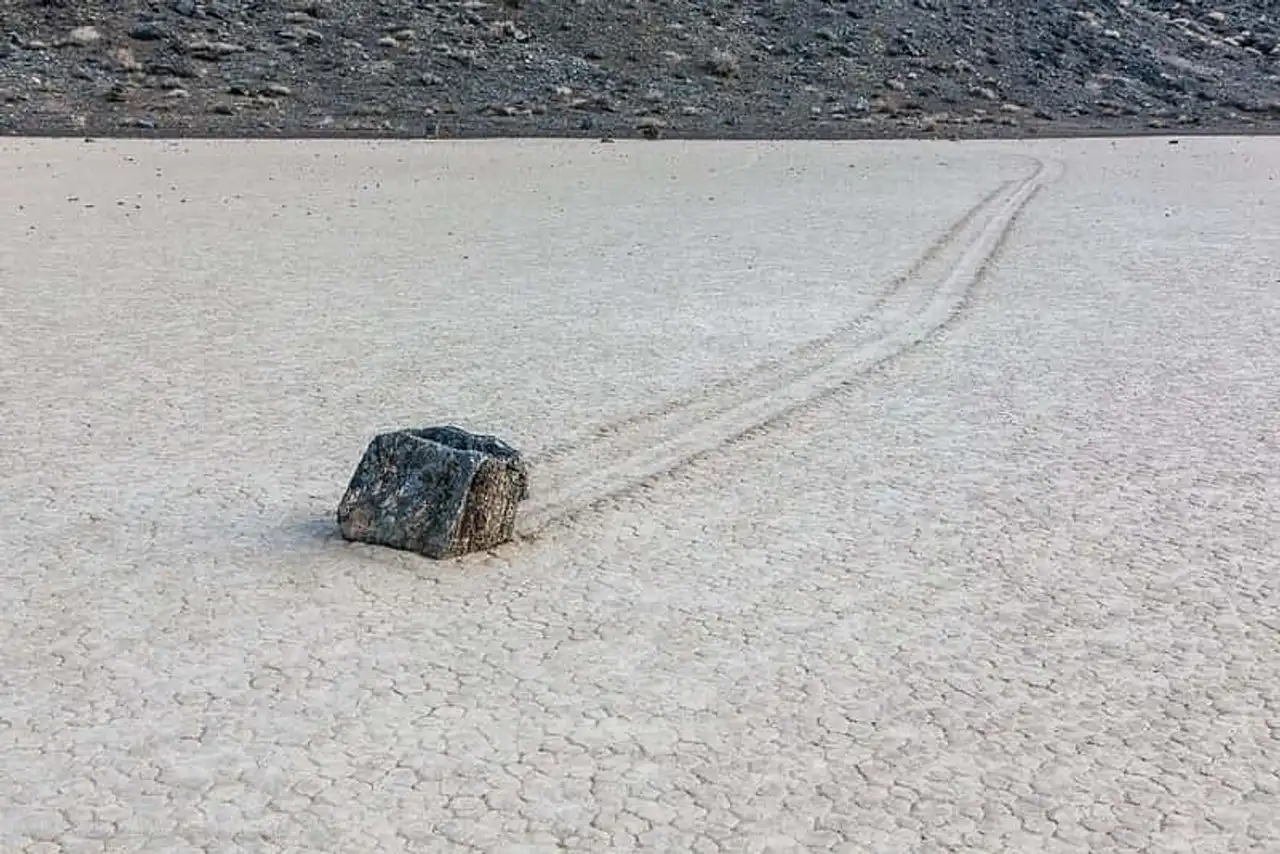
Flickr – Mike Baird
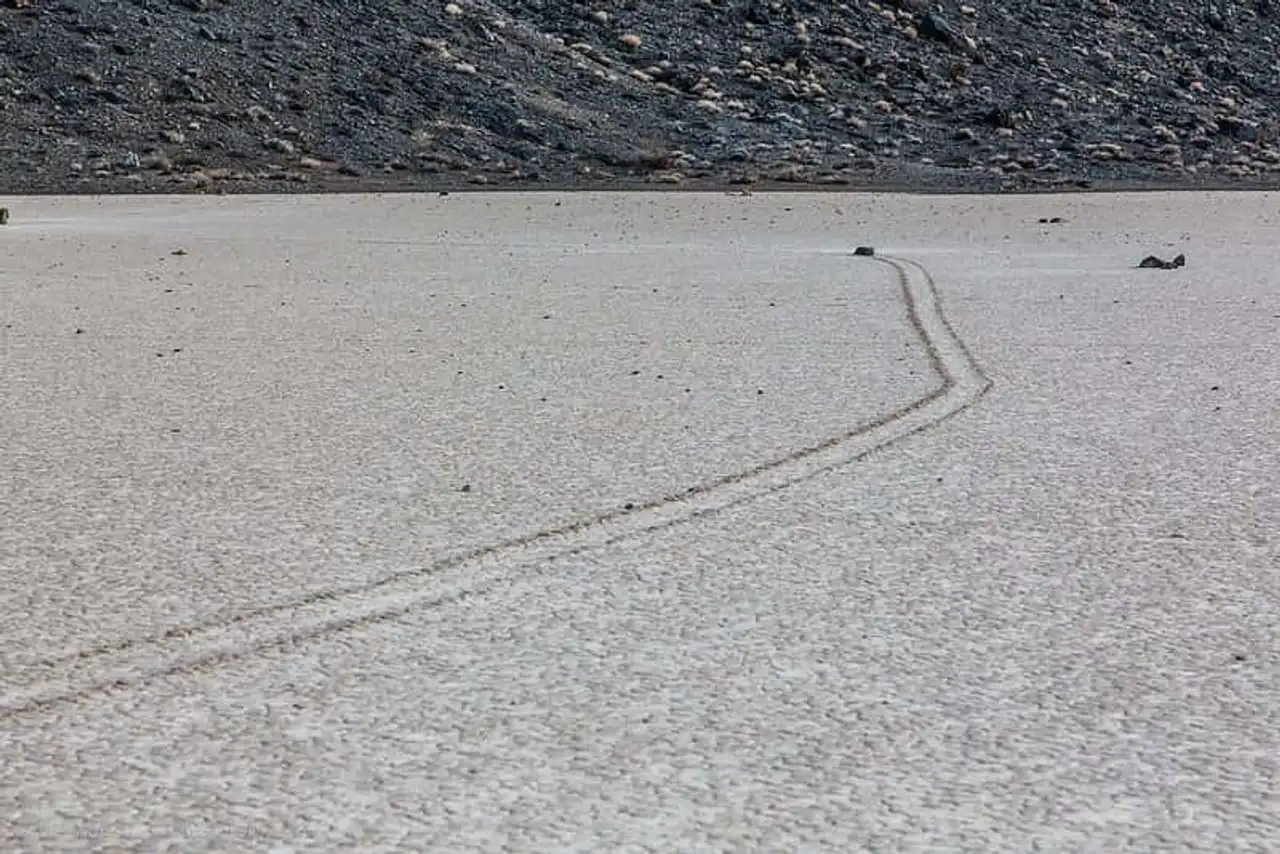
Flickr – Mike Baird
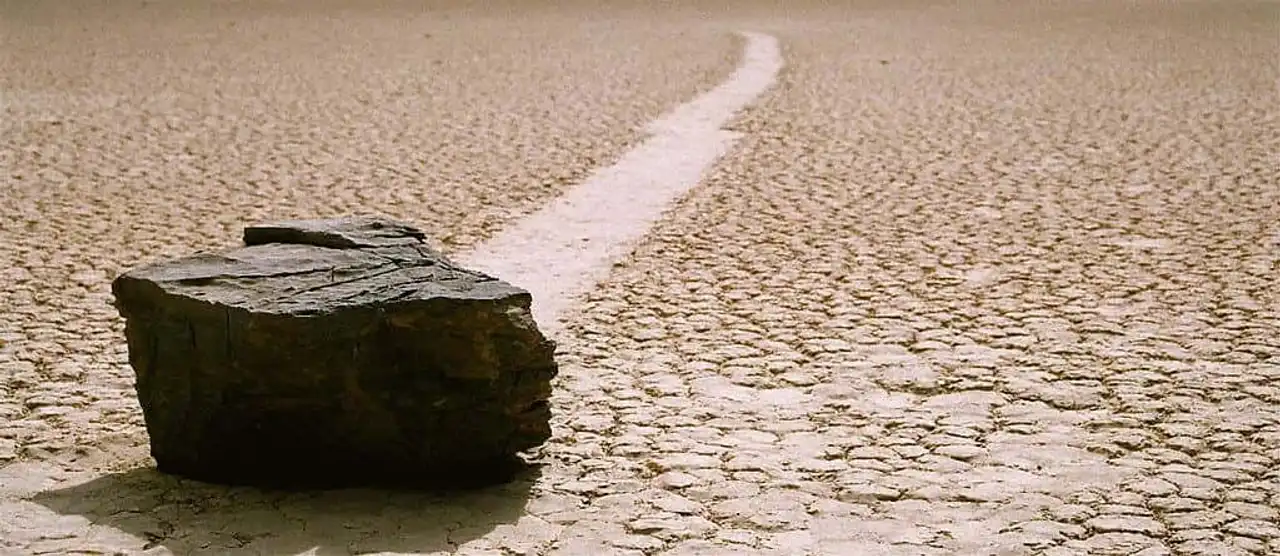
Wikimedia - Tahoenathan
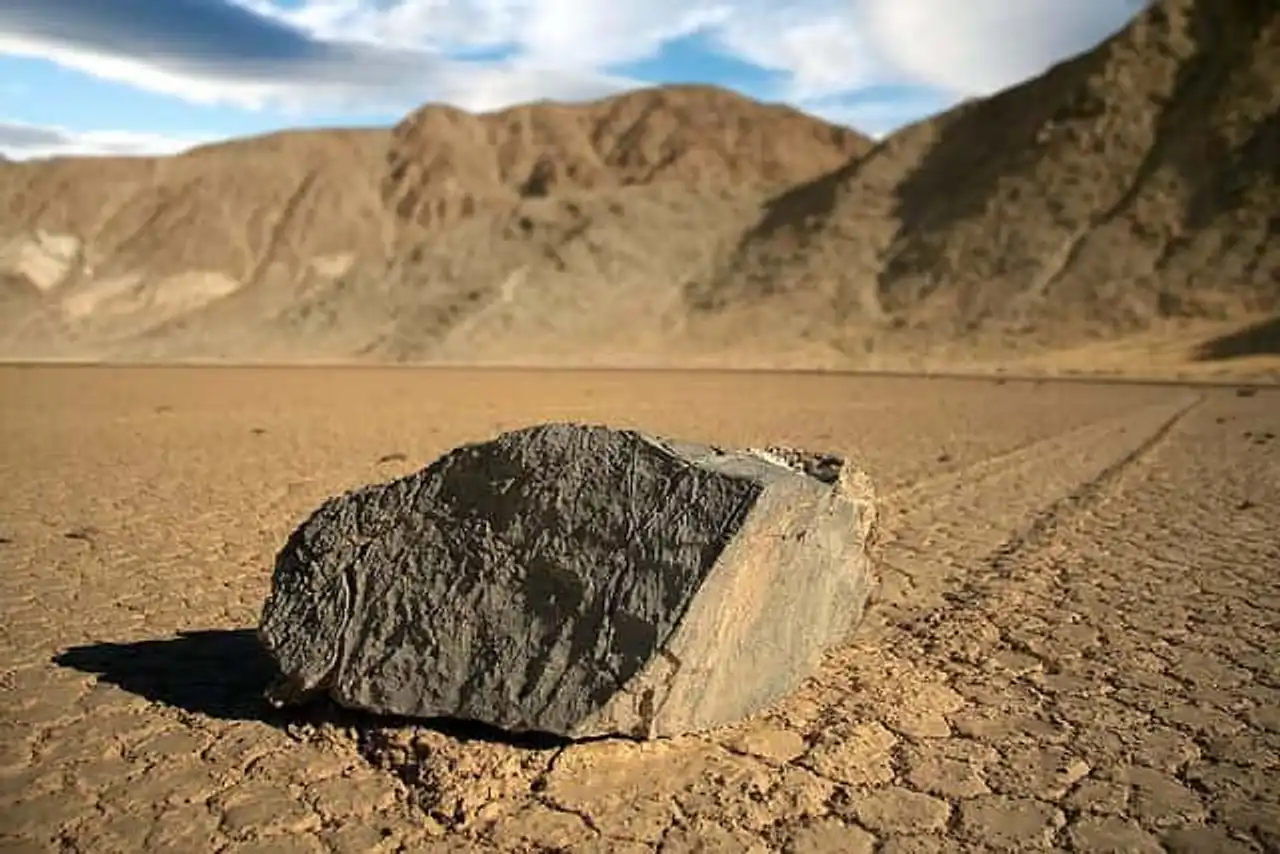
Flickr – Scott Beckner
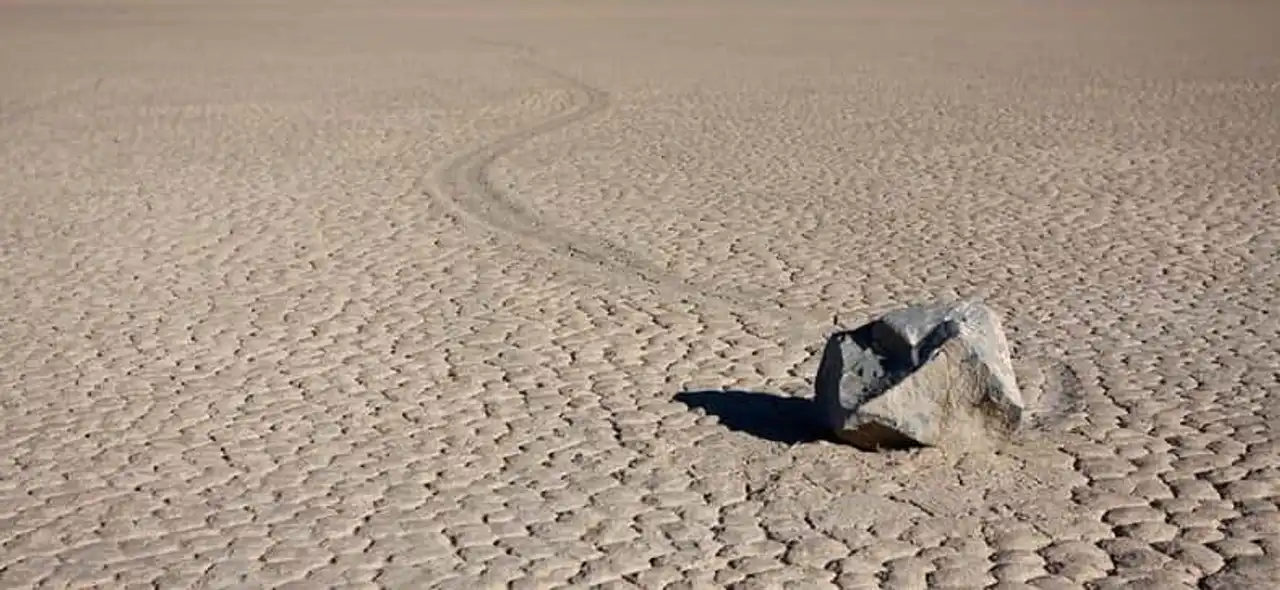
Flickr – Josh Rankin
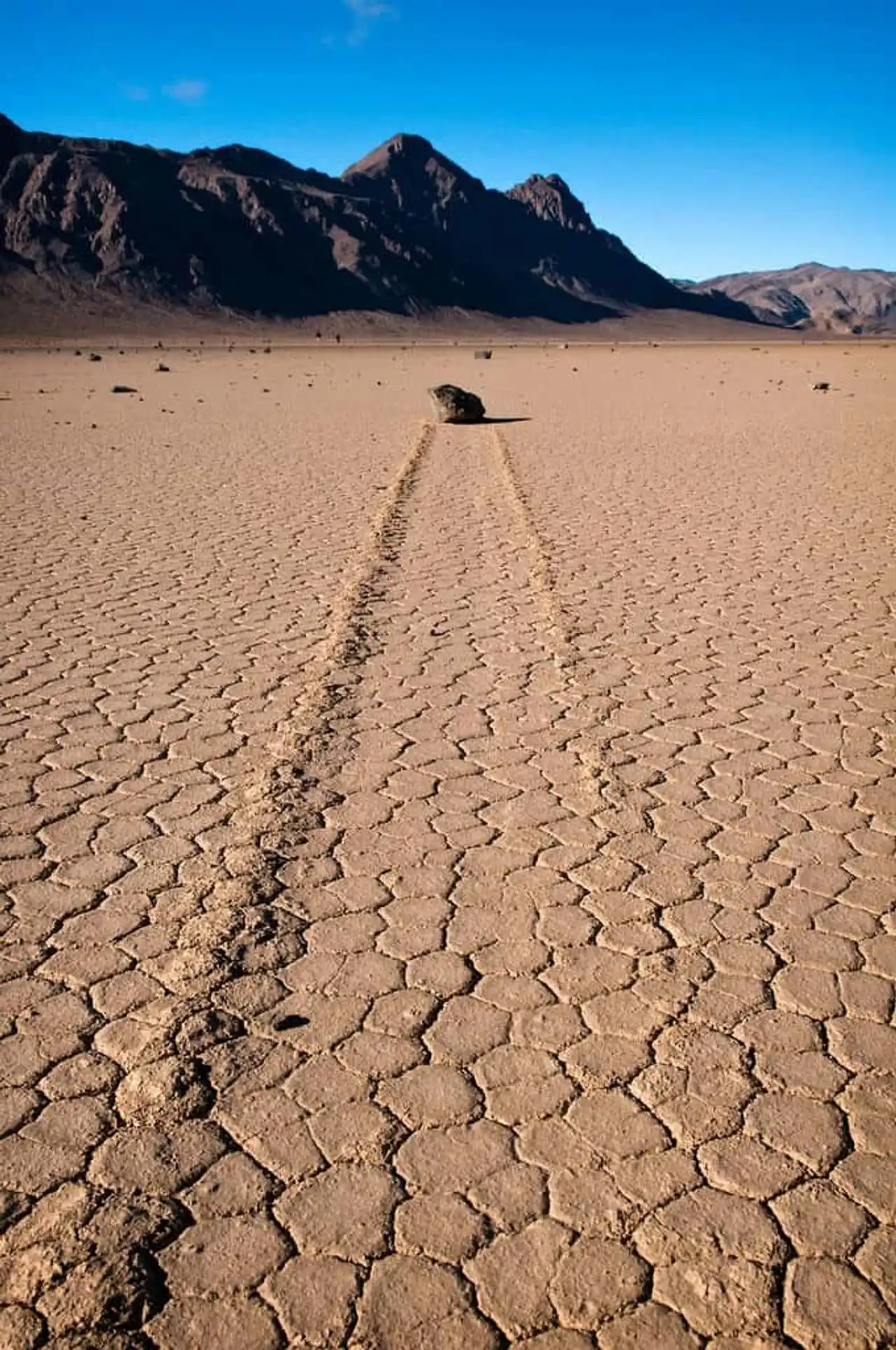
Flickr – Sandy Redding
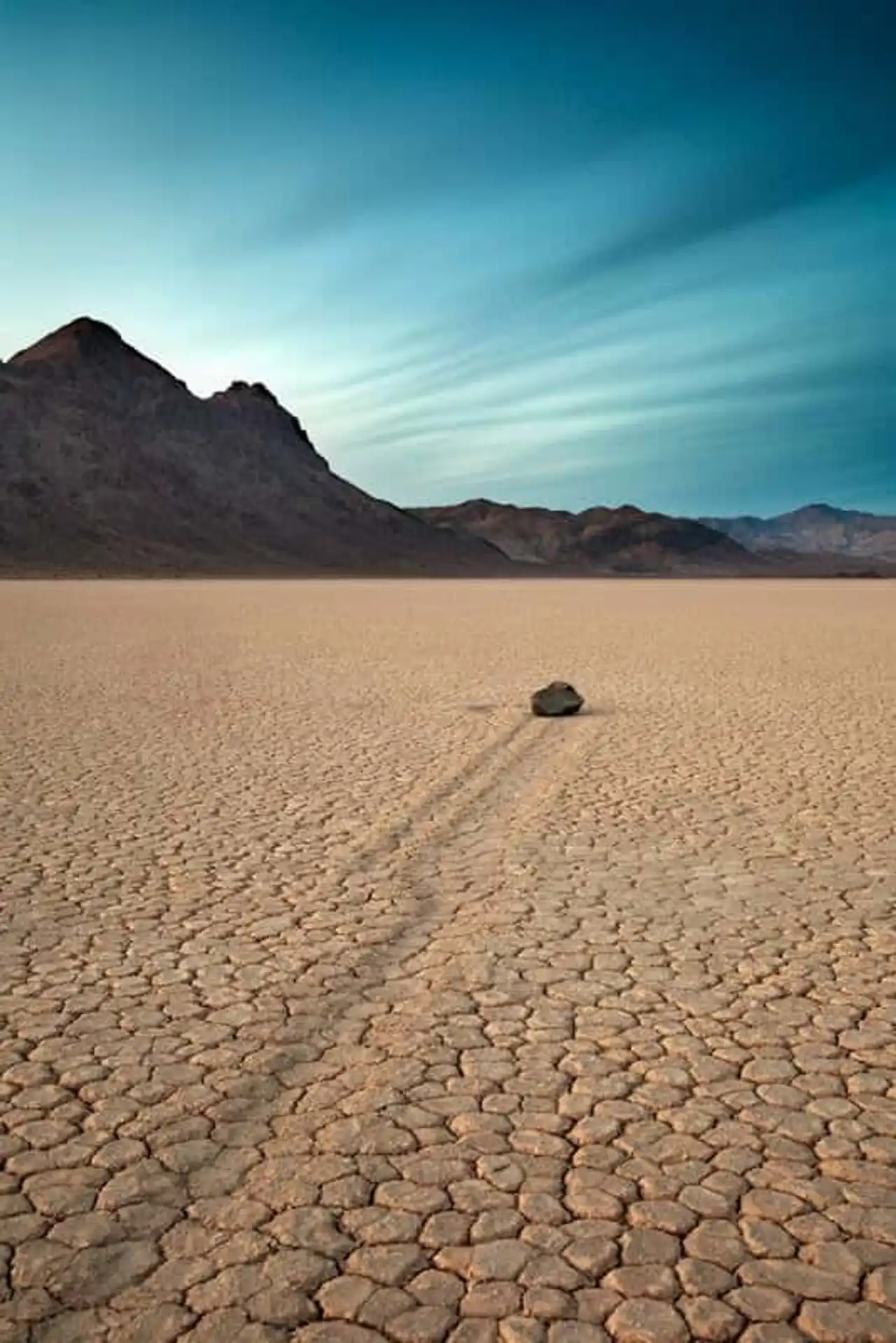
Flickr – Grant Kaye
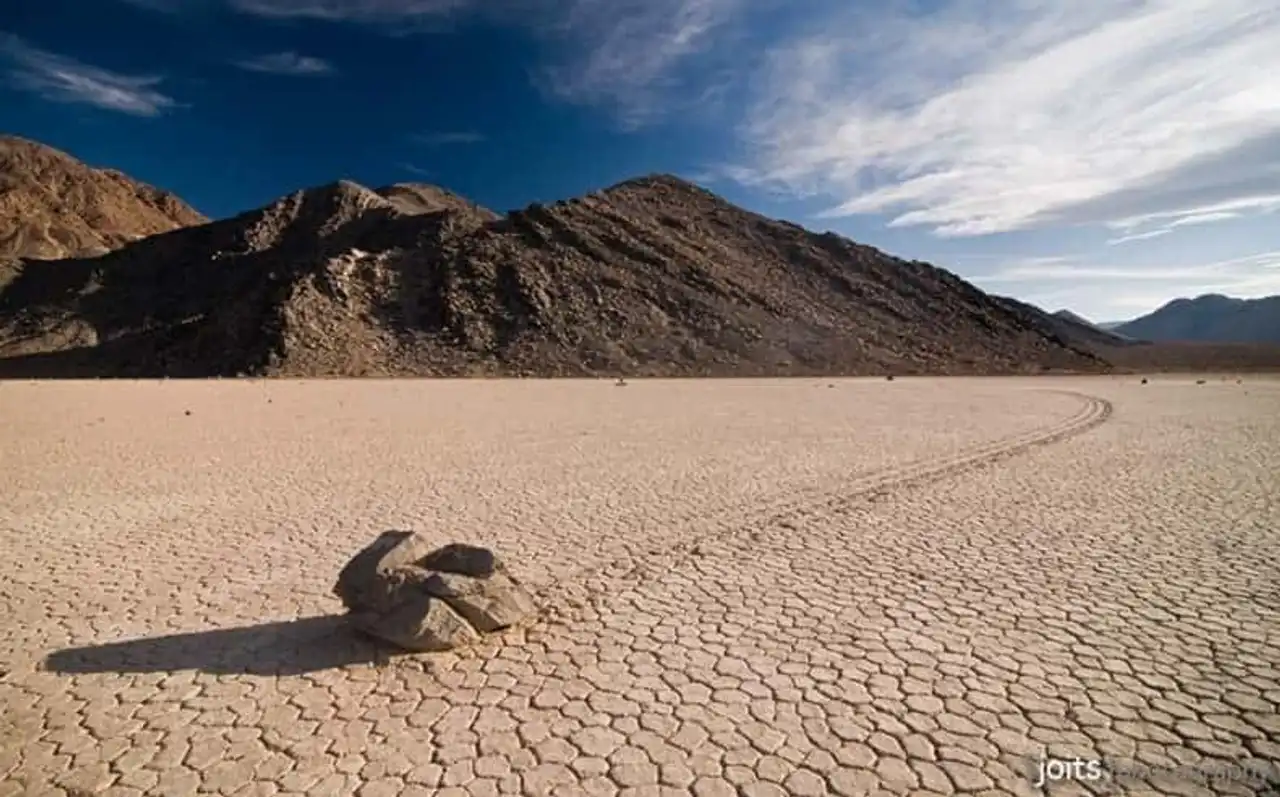
Flickr – Joits
How to get to Racetrack Playa?
To go see the moving stones, it's better to get from Las Vegas. Although the lake is in California, the city of Las Vegas is more ready. Take the US 95 route from Las Vegas and drive about 150 miles to turn to Sutton. The road to Racetrack Playa begins near Ubehebe Crater. It is strongly recommended to go there in 4×4. Off-road driving is prohibited as the desert is very fragile. Pay attention to Joshua tree or Joshua trees along the road, which should not be confused with cactus. After about thirty kilometers you will reach Teakettle Junction. Keep going straight. 27 km further you will then arrive at Racetrack. Here is the route on Google Maps to go see the Sailing Stones :
Have you visited the moving stones in the Death Valley?
Source: National Park Service




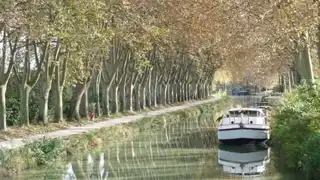

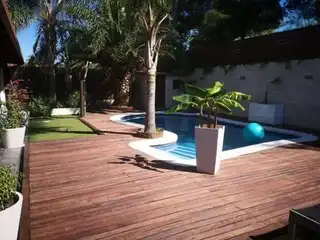
Loading comments ...